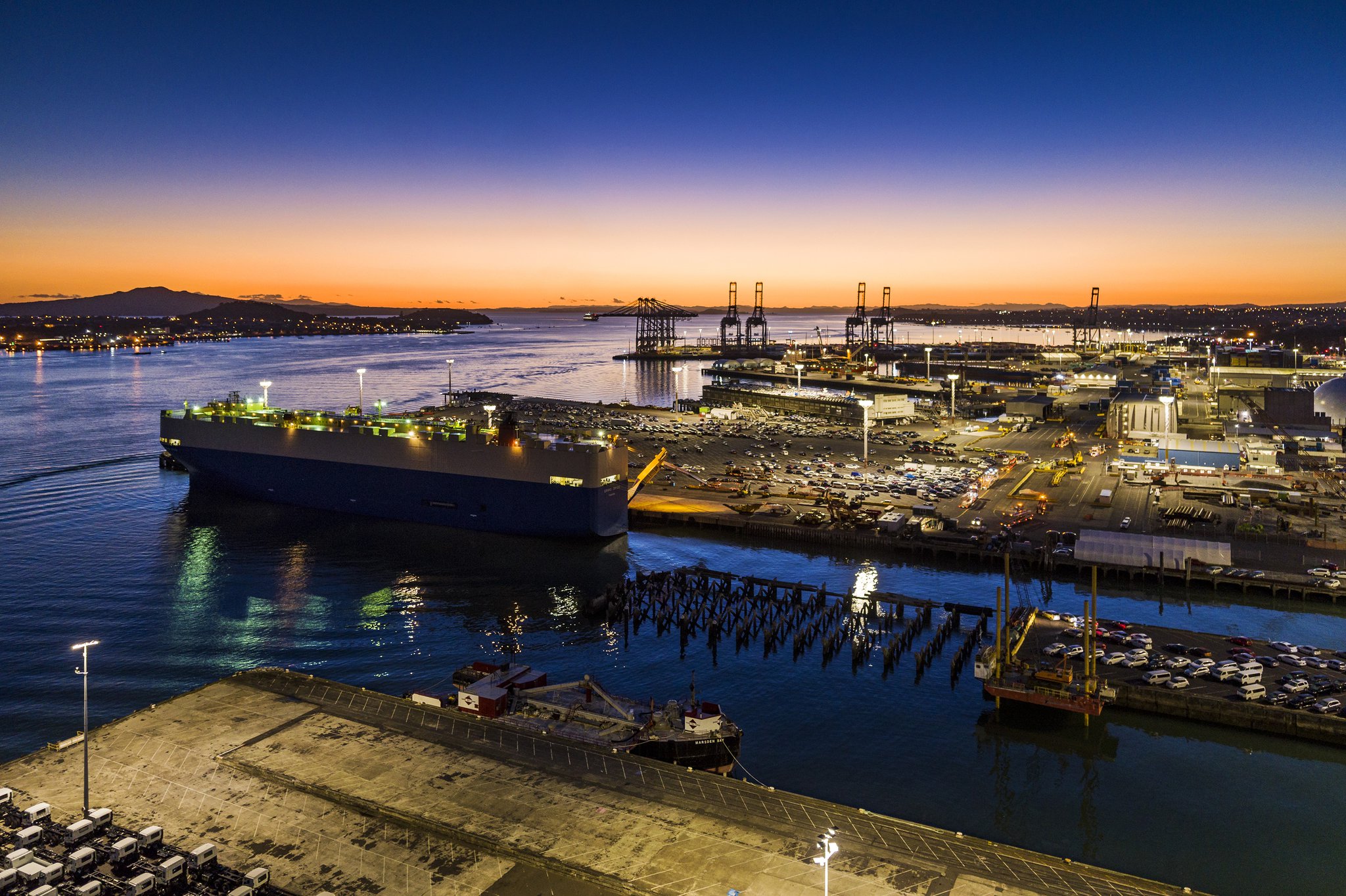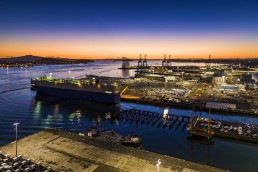April 2023 Trading Hours
To our valued clients & partners,
Kindly be advised that SILA Global offices will be closed over the Easter long weekend and ANZAC Day.
CLOSED
Easter Long Weekend
Friday, 7th April 2023
Saturday, 8th April 2023
Sunday, 9th April 2023
Monday, 10th April 2023
ANZAC Day
Tuesday, 25th April 2023
From the entire SILA team, we wish everyone a safe & happy Easter break.
SILA Global Office Closure – Friday 25 November 2022
To our valued customers,
Please note that the SILA Global office will be closed from 12pm local time on Friday 25th November for system upgrades and maintenance.
The office will be unattended during this time, so please make arrangements accordingly.
We will open as per normal on Monday 28th November
If you have any questions please contact your local SILA Global representative.
Thanks & kind regards
SILA Global Customer Service
Auckland Port Infrastructure Levy FCL Import & Export
Dear Valued Customers,
Port of Auckland has recently announced a two-phase Port Infrastructure levy fee for all international and domestic containers arriving at, or departing from Port of Auckland. The fee is implemented to contribute to the costs of delivering infrastructure investments and berth upgrades. The Port will collect the levy through the shipping lines effective 1st of January 2022.
This is a direct cost to us, Sila Global is unable to absorb this fee. Consequently, we will be introducing a new surcharge “Auckland Port Infrastructure Levy” to recover these costs.
The surcharge will be applied as per below table for all FCL international or domestic containers arriving at or departing from Port of Auckland.
Below table highlights the effective date and amount per container size.
Mode Effective Date 20’ Quantum 40’ Quantum
FCL Containers 1st January 2022 NZD 30 per TEU NZD 60 per FEU
FCL Containers 1st July 2022 NZD 60 per TEU NZD 120 per FEU
Please do not hesitate to contact us should you require further information
Thank you for your understanding and continued support

Christmas / New Year Trading Hours
To our valued customers & partners,
Kindly note, SILA Global will be closing at 12pm (local time) on the 24th & 31st of December and will also be closed for the national public holidays.
Christmas & New Year trading hours are as follows:
| Thursday 23rd December | Normal trading hours |
| Friday 24th December | Close 12pm local time |
| Monday 27th December | Closed for Christmas Day public holiday |
| Tuesday 28th December | Closed for Boxing Day public holiday |
| Wednesday 29th December | Normal trading hours |
| Thursday 30th December | Normal trading hours |
| Friday 31st December | Close 12pm local time |
| Monday 3rd January | Closed for New Years Day public holiday |
| Tuesday 4th January | Normal trading hours |
The SILA Global team would like to thank you for your continued support throughout 2021 and we look forward to seeing what the new year brings.
Wishing everyone a safe & happy holidays,
The SILA Global Team

SILA Global - Managing Director Appointment
7th December 2021
RE: Managing Director Appointment
Dear Customers & Partners,
On behalf of the SILA Global Board of Directors, I am pleased to announce that Simon Pepper has been appointed to the position of Managing Director. He will assume the head executive position at SILA Global with immediate effect.
Simon is a great example of the SILA Global culture encompassing TRUST, FAMILY, RESPECT and champions our SV3 ideals of PEOPLE, PROCESS, SYSTEMS.
A strong advocate for industry, Simon provides our customers with excellent consultancy services to improve their navigation of the international and domestic supply chain.
Celebrating his 11th year of service at SILA Global in January 2022, Simon has managed several significant projects within the company. Some of his achievements at SILA Global include:
- Fully Licenced Broker 18 years
- Member of IFCBAA Regional Advisory Committee 10+ years
- Prepared SILA Global to attain a Corporate Customs Licence & DAWE accreditation
- Implemented SILA Global Chain of Responsibility policy
- Prepared SILA Global to secure Australian Customs Trusted Trader accreditation
- Assisting customers in obtaining their Australian Trusted Trader accreditation
- Implemented SILA Global SV3 Drive product
- Transitioned SILA Global international & domestic teams to an exception based automated customer focused solution.
- Upcoming speaker at the Australian Stainless Steel Development Association (ASSDA) Conference
It has been my pleasure to be part of Simon’s journey. He has grown as a person and transitioned to a magnificent leader of people, and an expert in the field of international and domestic supply chain services.
On behalf of the shareholders and board of directors we look forward to Simons continued success and achievements.
Sincerely,
Darren Dumbleton
Chairman
SILA Brisbane Office Closure - 3rd December 2021
26/11/2021
To our valued customers,
Please note that the Brisbane SILA Global office will be closed from 12pm local time on Friday 3rd December 2021 for system upgrades and maintenance.
The office will be unattended during this time, so please make arrangements accordingly.
We will open as per normal on Monday 6th December 2021.
If you have any questions please contact your local SILA Global representative.
Thanks & kind regards
SILA Global Customer Service
SILA Global - Coronavirus Weekly Update 24/04/2020
Coronavirus Weekly Update
Dear Reader,
Please find below weekly update of major international hubs experiencing COVID-19 restrictions:
Canada: Working as normal - limited air space
China: Working as normal - limited space & higher air rates. Permits needed between Hong Kong & Shenzhen.
India: Complete lockdown extended until May– only medical, food & approved items allowed to move subject to medical screening. Air space drastically affected, sea freight affected by limited staff, less capacity, some port closure, quarantine requirements and port congestion. Domestic transport for essential services only. Some agriculture, manufacturing & construction allowed to resume work.
Indonesia: Partial lockdown extended until 31/04 – working with decreased hours/less capacity. Air rates are high with some services suspended.
Italy: Limited air space, Sea freight stable. Essential services not affected and non essential services may operate by special request
Germany: Partial lockdown - space is extremely limited.
Korea: Partial shutdown extended to May 5 – unstable schedule & limited space
Malaysia: Partial shutdown in place extended to 12/05 – essential services are OK however non-essential requires exemption. Less air/sea capacity.
New Zealand: Some lifting of restrictions moving to Level 3 - to be reviewed in 2 weeks. Essential services OK, some businesses now allowed to open and will allow for cargo deliveries to take place.
Peru: Partial lockdown in effect. Air & sea freight OK however with delays.
Philippines: Partial shutdown extended to 30/04 – some zones have suspended business. There is less space, unstable schedules and transport requires permits. Port congestion in Manila.
South Africa: Government lockdown extended until 30/04. Supply chain for essential services is OK
Taiwan: Working as normal – limited space & higher air rates
USA: Working as normal – some partial shutdown in some areas. Air freight is tight, sea freight is operating as normal.
UK: Lockdown extended with all non essential shops closed. End delivery points impacted by lockdowns but supply chain still open. Air space heavily reduced with no contract rates.
Vietnam: Partial shutdowns in place. Less capacity, subject to blank sailings and limited flights. Transport is subject to health check points. Medical supplies & rice restricted for export.
Please also find below latest update from the FTA:
New Zealand is winding back to "lock down stage 3" providing similar restrictions to those currently in Australia. This means that both governments are still requesting the public to stay home unless needing to access food, health or similar essential services. Whilst a necessary health measure, this will clearly further restrict the recovery of the respective domestic economies until such time as the wider retail outlets can open with certainty of people being allowed to access them. Once restrictions are lifted it is likely that the community will take time to grow in confidence. This aligns with media reports from Europe and China indicating that there is a reticence from some to put their health at risk and venture out unless necessary.
In the interim, many retailers bottom lines will continue to be impacted. Also affecting trade is that Europe and the USA continue to have significant infections impacting their ability to manufacture and supply products, assuming they had the parts and raw materials from China to do so.
Despite the significant growth in online e-commerce transactions, speculation continues that our region is heading towards a recession with a likely extended recovery period. We clearly require ongoing government support and co-operation across our industry to minimise the adverse impacts to the international trade sector.
China - Update
Our sources from China have provided us with the following updates
- China North East Area is still in big concern. Haerbing (capital of Heilongjiang province is starting a partially lock down. However there is no official news about the effect on Port Dalian’s operation at this stage.
- According to Ministry of Transport of PRC(April 20), port foreign trade for 2020 is expected to reduce by 6% and foreign trade container throughput will decline by about 10%
- According to China ports & harbours association, the key ports in China have reduced container throughput by approx 5% year on year.
- According to Florens Asset Management Company there has been substantial demand for new containerssince March.
- According to the Global Port Tracker released by the National Retail Federation and Hackett Associates, import volume of major container ports in the USA fell to the lowest level in 5 years in March. Forecasts pre COVID - 19 for the period February thru May was 6.9 million TEU. that is now expected to be around 5.7 million TEU a decrease of some 17.3%
- According to The State Council Information Office of the PRC, April 17. The first Season’s GDP of China has reduced 6.8%, The value of the import/export trade for the same period also dropped 6.4%.
General Updates
- North America- No major freight changes being experienced. Previous fears of cargo backlogs at the cargo terminals have been eased due the continuing operation of the supply chain and the anticipated downturn in imports from China due to order cancellations.
NB: On April 20, 2020, the Secretary of the Treasury and U.S. Customs and Border Protection (CBP) will be postponing for 90 calendar days the deadline for payment for the deposit of certain estimated duties, taxes, and fees for importers experiencing a significant financial hardship due to the coronavirus disease (COVID-19). - Europe- not dissimilar to the USA, Ports operational in most countries but processing is slow. Italy, some easing of restrictions however the worst affected areas in the North still remain in full lockdown. Spain, lockdown still in force through to May 9 however some construction and factory workers allowed back to work.
- United Kingdom- Lockdown restrictions have been continued for another 3 weeks and will be reviewed in May. All non essential shops close - supply chain still operating but a number of businesses are working from home which is impacting cargo delivery.
- New Zealand - New Zealand to transition to stage 3 lockdown on April 27 with a further review to take place in two weeks time. At least this will allow businesses to open back up and allow deliveries from cargo terminals to be less impacted.
- India- Lockdown extended till May 3 - some workers in the areas of agriculture, manufacturing and construction allowed to go back to work
Economic Update
"The collapse in Oil prices continued to dominate markets, as the impact flowed through into the banking sector and the wider equity markets. US equities have sustained massive losses in equities, in the first two trading days of the week, as markets consider the impact on the banks of the collapse in the Oil and Gas sector."
"Oil has taken the platform from the pandemic temporarily, but the Central issue now is the impact the virus has had on global economies. When can these economies re-open and what devastation this has caused (short/medium/long term), which can only be assessed after the storm has blown over."
- See the full daily update HERE // see weekly update HERE
Please view a presentation a presentation by Collinson Forex on 30 January 2020 showcasing latest technology solutions – refer HERE
Shipping Update
In discussion with a number of shipping lines yesterday the general consensus, albeit one of those contacted indicated they still had strong volumes into mid /late May before fading away, was that trade volumes into Australia from China will decline during the month of May. Public holidays in China, in early May, will have an impact as well as declining orders.
Some lines indicated the downturn could last into June / July and have already factored in blank sailings. Thoughts on decreases ranged from 10% thru 25%. It was also suggested that whilst we are focused on China that trade volumes from other south east Asian countries ( Philippines / Vietnam etc) along with Europe could also decline as infection rates spread and restrictions are put in place.
In relation to our correspondence with shipping lines and stevedores on the matters of demurrage / detention, we continue to get replies that indicate an acknowledgment of the situation and where required a willingness to work with their clients on these matters, on a case by case basis at present.
In addition to those already acknowledged has having replied we have since received commentary from Hamburg Sud and Flinders Ports. It is disappointing that the two nationally operating stevedores are yet to reply. FTA will continue to seek commentary from all those who have not answered so that industry can have some certainty on these matters moving forward.
NB: Many businesses are supporting the health needs of communities and health workers by facilitating shipments of a range of items. For shippers and forwarders a note on the Maersk web site is a timely reminder re shipping requirements for "hand sanitiser".
Airfreight Update
The $110 million International Freight Assistance Mechanism (IFAM) is starting to see traction with flights already being arranged for seafood products out of Perth. FTA can also advise that from meetings with Austrade in recent days we expect an announcement later this week on the airlines and freight forwarders who will be tasks with managing the IFAM process to support the agriculture, seafood and perishable market exporters.
If your goods, import / export, do not meet the IFAM guidelines please continue to review the FTA COVID- 19 Air Cargo bulletin board to advertise your space availability or needs.
Transport & Port Updates
Transport for NSW - Coronavirus Update #2
Port of Melbourne - Covid -19 Update #5
Freight & Logistics Council of WA - COVID -19 web site
WCO updates
* Joint WCO-IMO statement on the integrity of the global supply chain
during the COVID-19 pandemic
* WCO and WTO join forces to minimize disruptions to cross-border trade in goods
* WCO - Temporary Import Supports and Export Restrictions lists by country
Australian Border Force (ABF)
The ABF through its Border Watch program has recently released two bulletins in relation to the current situation - members may find this information useful both in house and for advice to their clients.
- COVID - 19 test kits
- New Export Controls - (refer attached indicator sheet)
Please note the below links for up dated information
- Latest Shipping notifications
- Loadstar web site – broad coverage of a range of related issues globally
- Aircargo News web site - up to date information on global airline impacts
- FTA - COVID-19 news site
- FTA - COVID-19 Air Cargo Bulletin Board
FURTHER INFORMATION
FTA suggest members / industry maintain close relations with their forwarders, agents, shipping lines, clients and suppliers / agents globally to ensure they have the latest information available. This is a time for review and planning not for panic.
FTA will continue to monitor issues surrounding the coronavirus and keep members updated as necessary.
WORKING TOWARDS A POSITIVE OUTCOME!
John Park - Head of Business Operations, FTA / APSA
The Impact of Coronavirus on Supply Chains
*Please note with the evolving situation, some of this information might be outdated at the time of publication
In February, we published the news that the outbreak of Coronavirus (COVID-19) had prompted the Chinese government to enact new regulations to prevent the spread of the disease. Many provincial governments announced an extension of Lunar New Year holidays and some airline carriers temporarily ceased import and export operations to and from China. Despite Coronavirus causing spikes in supply and China being home to one of SILA’s major freight partners, our supply chains are still as robust as ever, largely due to the nature of the goods we carry, but also due to our steadfast systems and technology that provides us with complete visibility of our freight. Not to mention, China operations are coming back to life with the re-opening and restarting of factory manufacturing, and it’s expected to be nearing full production by the end of the month.
However, many other supply chains aren't so lucky, so we're taking a look at some of the most prominent effects of the virus on the Australian logistics industry.
The Panic
At the beginning of 2020, most people thought that Coronavirus was a simple cold taking over China due to poor medical care and resources. Flash forward to now and travellers are being sent into isolation, hand sanitiser has spiked 428% in sales and toilet paper is a hot commodity. Despite the panicked photos of empty shelves and overflowing trolleys telling a story of a crumbling supply chain, the Australian Food and Grocery Council reassures us that this only reflects a short-term stock issue that they are fully prepared for. The panic-buying has called for limitations to be imposed on toilet paper, hand sanitisers and some food staples including pasta, rice, mincemeat and flour. However, this is to combat the short term panic with the supermarkets noting there is still plenty of food and there is no chance that we would run out.
With Australia’s history of natural disasters including floods, cyclones and bushfires, the likes of Coles and Woolworths have faced these massive, sudden demands from consumers before. Right now, supply chains are under more pressure and stress than they are used to; however, this is a short-term response to a sudden spike in demand as people not only begin to panic but also buy into the idea of ‘maybe I should be doing that too.’ It’s prompted Woolworths to suspend online orders in response to the panic, and shorten opening hours to allow for restocking. There are permanent plans that are in place to comprehensively respond across all networks and contingencies including resourcing and product sourcing. Though the demand is higher, it has yet to reach a level that is untenable for our trusted Australian supply chains.
The Closures
There is an undeniable reliance on Asian supply chains for tech companies who are notoriously dependent upon their manufacturing factories. Many Chinese factories had only just started opening after having their Lunar New Year holidays when they were closed again in early February.
The impact is evident through Apple’s delay of the release of the new iPad Pro as they struggle to combat the temporary closing of Foxconn and Pegatron factories which manufacture and assemble Apple devices. Apple went on to make the unprecedented announcement on March 15 that it would be closing all stores outside of China for two weeks. Even with these closures though, CEO Tim Cook notes that there is some optimism given the number of Chinese cases is going down every day.
Fortunately, the factories are opening up again, supplying relief for supply chains, but there are still expected to be more delays as over half of these workers are unable to come in. The re-openings have managed to jumpstart the supply chains as, despite the manufacturers working with 50-60%, they are still able to continue providing and re-invigorate supply chains.
The Ban
The implementation of travel bans in Australia are disrupting some of the biggest supply chains - education and tourism. With airlines cancelling all international flights, they face a massive loss of profit, a surge in employees on leave, and an inevitable freeze on recruitment. Subsequently, tourism and education are being hit with dwindling reservation and enrolment numbers for the next 6 months. International education was a $34 billion sector for Australia in 2018-19, and Chinese students brought in an estimated $12.1 billion that year. Universities are trying to maintain their enrolments and keep their current students as safe as possible by making crucial shifts to providing lectures and tutorials online. However, tourist spots are struggling as many are being forced to close. Combine this with most Australian states now in lockdown and non-essential businesses closed.
Even the most substantial and intricate supply chains are experiencing the consequences of the spread of Coronavirus, and there may be another wave of disruption to come. This crisis highlights the importance of each component in the chain and the run-on effects they have. We are fortunately prepared for any issues that may arise as a result of the virus and are grateful to have our strong network connectivity and SV3 system to ensure that our clients are still getting the best-uninterrupted service.
Australia
Email sales@sila.net.au
Phone +61 7 3908 1690
New Zealand
Email sales@sila.net.nz
Phone +(07) 3733 2685
Top 5 Ways to Cut Supply Chain Costs
When it comes to increasing profits, there are two avenues to choose from; increasing revenue, or decreasing costs. Your business may find that it is in your best interests to increase profits by reducing your supply costs. To get a grasp of where you can cut costs in your supply chain, you must figure out what can be eliminated, improved, or changed to improve efficiency. At SILA, we combine SV3 technology with our hands-on expertise to shine a light on any issues within a supply chain. This enables us to provide our clients with smart solutions based on real-time data and analytics. To get you started, we have compiled our top five tips to cut costs in your supply chain.
1. Utilise available space
On a micro level, the use of space in the packaging and shipping of your products will make all the difference in avoiding damage or property loss. On a larger scale, how you utilise your space can be extremely important to overall supply chain costs. You are paying for every inch of space in your warehouse or on-site, one way or another. If you are paying for space that is - or could be - empty, you’re throwing money away.
Plan out a method of storage that is the most efficient, but also the most logical for your organisation. Organise things efficiently and make the most of less space, but be clever about how it’s laid out: if employees are struggling to locate particular goods, your money is wasted on their time also.
A great example of a storage strategy that is tailored to a particular business model is online retailer Amazon. The Amazon warehouse utilises a system called “chaotic storage.” This is based on barcodes, rather than product category, which allows employees to find items easily and makes operations more accurate and efficient.
2. Streamline ordering
Make your ordering process as efficient as possible. Firstly, if you’re still using a paper checklist, throw it away and use a single software package for completing orders. This will help avoid situations where employees use different applications and order too much of specific products or supplies. Implementing an approval process that requires consent from designated admins will also help avoid unnecessary orders.
This won’t work for all businesses, but if you can implement a Just In Time (JIT) inventory management strategy, you can reduce waste and cost from excess stock. JIT is a strategy to increase efficiency and decrease waste by receiving goods only as they’re needed, with the main goal of reducing costs on inventory.
By having a supplier expedite shipments for your business, you will be able to order closer to the time you need the supplies and order a more accurate number of units. Ordering far in advance incurs warehouse costs, as you have to store the products longer - this accounts for more space, as well as a higher risk that items are damaged or stolen.
3. Monitor demand
A JIT Inventory management strategy relies on accurate forecasting of consumer demands, meaning you may need to dedicate more energy to analysing consumer demand. Not only will this create efficiency in ordering, but you will also be able to shape your supply chain strategy and structure based on your findings.
By ensuring you provide customers with what they actually want, you will avoid costs associated with things that they see no value in. Although this sounds simple, companies get it back to front all too often. A great example is offering next-day delivery to all customers - even though not every customer needs or wants it. This wastes money on express transport by “overservicing” some accounts. By only offering next-day delivery to those who actually want it, costs are lowered and customers are more satisfied across the board.
4. Outsourcing
Outsourcing is a great option to consider if you're looking to improve efficiency in your supply chain. You can bring on board a company to take over a particular process if there is an area you are struggling to improve. Generally, these service providers will specialise in the field, and you will find your efficiency increase immensely. Of course, it’s important to properly research and screen service providers to ensure they can provide enough productivity and efficiency benefit to justify the expense. Under the right circumstances, outsourcing certain processes can lead to significant savings and a well-functioning supply chain.
5. Measure performance
The only real way to see how your supply chain is performing is to measure outcomes and key performance indicators (KPI’s). You’ll have a hard time determining how much you’re improving your processes if you don’t have any idea how you are performing in the first place. Select critical KPI’s to track short and long term to see how you’re doing. Set goals based on these KPI’s, and watch yourself hit them as you continue to improve your strategy.
You can keep supply chain expenses down by analysing every phase of the process. Break the chain down into its essential elements, and you can see ways to make it work more efficiently. Our team at SILA can show you how using our SV3 system can give you real-time data and analytics to revolutionise your supply chain and enable greater agility and growth.
SV3 stands for SILA Visual 3 and encompasses our systems, people and processes. The combination of these 3 assets allows us to provide a powerful and transparent logistics solution that gives our customers an edge, allowing them to work smarter and faster.
For more information on how SILA can revolutionise the way you manage your supply chain, head to our website www.sila.net.au or get in touch with our friendly teams in Australia or New Zealand:
Australia
Email sales@sila.net.au
Phone +61 7 3908 1690
New Zealand
Email sales@sila.net.nz
Phone +(07) 3733 2685
Corona Virus Update: Impact on Freight Industry
Dear Clients,
As you would be aware the coronavirus that has emerged from China is now having an impact to freight industry globally.
Many provincial governments in China have announced that the Lunar New Year holidays have been extended until Feb 9th with most offices currently due to resume work on February 10th. The Wuhan and Hubei governments at this stage however are in lock down and there is every possibility that the lock down may extend beyond February 9th.
Over the last 24 hours we have received advice that many of the airline carriers will be ceasing their import and export operations to/from China up until March 1st, however this is subject to change at anytime and we will keep you updated in due course.
Currently the Ocean carriers have not advised on any changes to their current export scheduling ex China to Australia, however it has now been confirmed that there are restrictions being applied to the arrival of vessels from China into AU.
For vessels that have called China and calling a NSW port, effectively immediately, the vessel will be held from berthing because as at this stage no pilot will be allowed to embark a vessel unless it has been at sea for a Minimum of 14 days.
For all other Australian ports it has been agreed that any vessel that sailed China on or after February 1st will again not be able to berth for until 14 days have eleapsed from departure.

Kind Regards
SILA Customer Service








